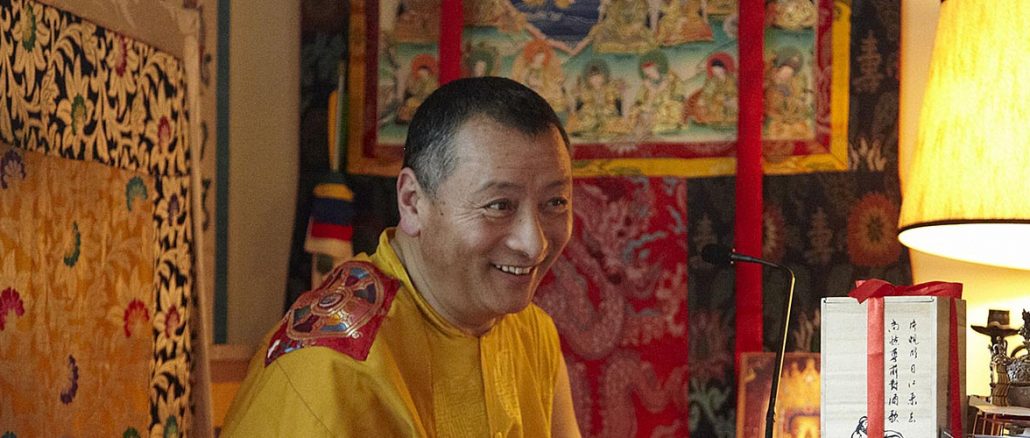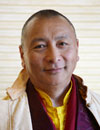
The process of moving from a deluded mind to the state of dharmakaya is not a process of replacing the one with the other. It is not exchanging one thing for another. It is simply causing the mind to see itself as it always was. In fact, all of the functions of mind are always the trikaya. The mind’s nature is dharmakaya; its attribute of cognitive lucidity is the sambhogakaya; and even the play of thoughts are themselves nirmankaya. However, as long as the mind turns away from itself and remains deluded we don’t see this as it is. Being deluded all we see is more and more delusion. But whenever the mind turns back in on itself – in that instant – it has the opportunity to recognize itself, and that recognition is instantaneous. As is said, “In a single instant, perfect buddhaood [is achieved]; in a single instant, the difference occurs.”
Understanding this we will understand that buddhahood is not distant. It is not a matter of going somewhere else or of acquiring something that is not already present within our mind. Everything we need is already present within our mind. However, although our minds in their nature are flawless and perfect, we don’t see them as they are. Why do we not see the nature of mind? We don’t see our minds because they are too close to us. It is not the case that buddhahood is distant; it is so close to us that we can’t see it, just as you can’t see your own back. That’s why we don’t see our mind. So all of the methods, means, and techniques that we practice, including the generation stage, are practiced in order to gradually remove the veils or obscurations that prevent our minds from seeing themselves as they are. And as we remove these, one after another, and diminish or decrease self-fixation as a result, we come closer and closer to the recognition of our mind’s nature, which is and always has been the dharmakaya. But fundamentally this depends on the attitude we take and on our motivation.
[From a teaching on the song A Reply to Two Nephews by Bardor Tulku Rinpoche in Chicago, Illinois in 2011. Translated by Lama Yeshe Gyamtso.]

